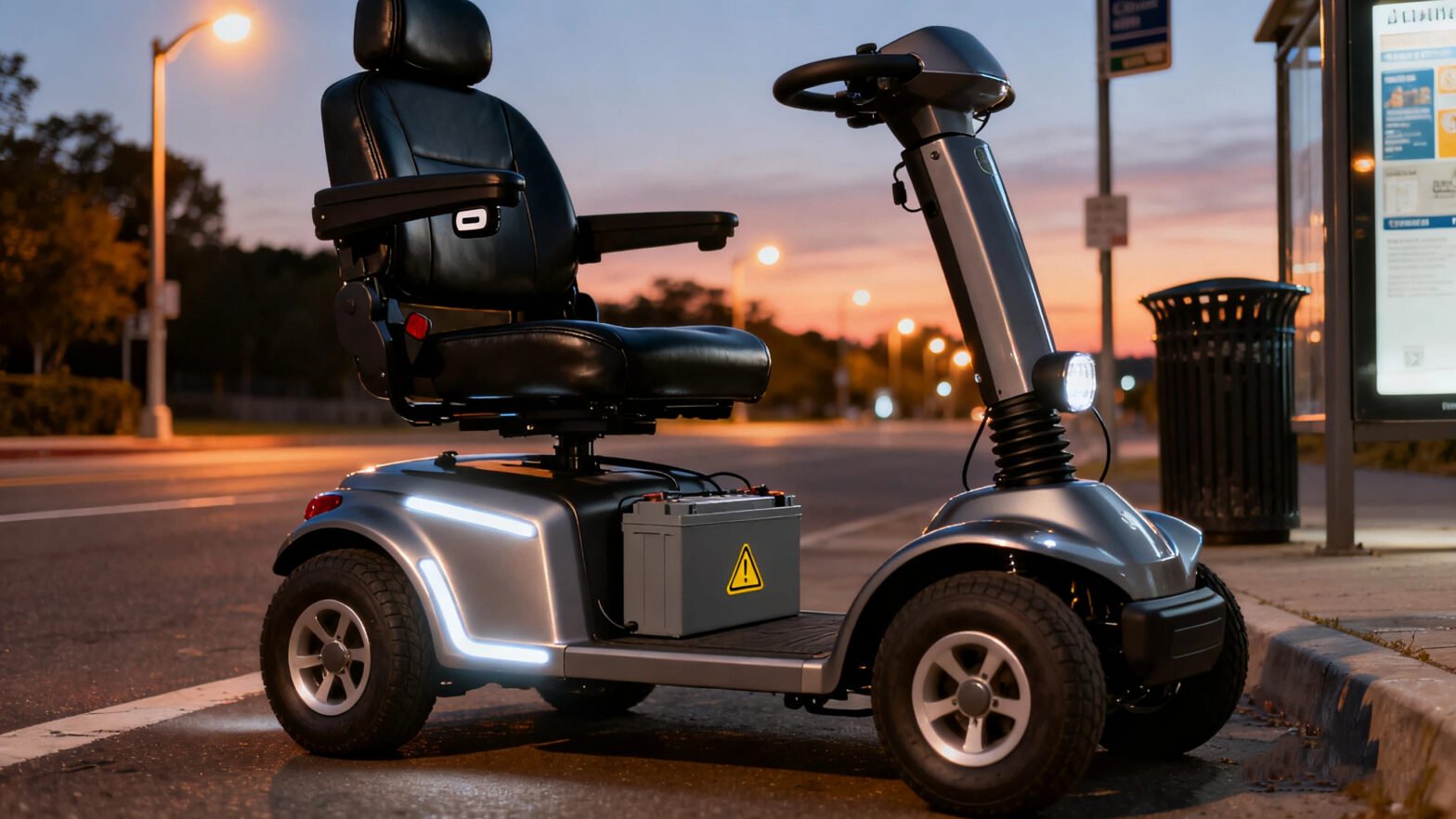
For travelers who rely on mobility scooters, planning a flight often comes with a critical question: which scooter batteries are permitted on planes? Airlines and aviation authorities have strict guidelines to ensure safety, and these rules vary significantly between battery types. Whether you’re using a lightweight travel scooter or a larger model, understanding battery restrictions can prevent last-minute delays, missed flights, or even having to leave your scooter behind. This blog breaks down the key regulations for the two most common mobility scooter batteries—lithium-ion and sealed lead-acid—so you can travel with confidence.
Lithium-ion batteries have grown in popularity for mobility scooters thanks to their compact size, fast charging, and ability to power scooters for longer distances without adding extra weight. However, their flammable properties mean they face tighter restrictions than traditional batteries.
The Civil Aviation Authority (CAA)—a leading global aviation body—sets a universal limit: lithium-ion batteries in mobility scooters must not exceed 300Wh (Watt-hours). This is a hard cap for most airlines, but some carriers (especially budget airlines like Ryanair or easyJet) may enforce lower limits. For example, a small number of airlines restrict lithium-ion batteries to 160Wh, so always check your airline’s website or contact their customer service before booking.
Another key rule: some airlines require you to remove the lithium-ion battery from the scooter and carry it in the cabin (not the hold). This can be tricky for folding scooters, as many models can’t fold once the battery is removed. If you have a folding scooter, test battery removal beforehand to avoid issues at the airport. Additionally, if you do carry the battery in the cabin, you must:
Insulate the battery terminals (use electrical tape to cover exposed metal) to prevent short circuits.
Place the battery in a protective pouch or case to avoid damage.
Ensure the battery stays under the 300Wh limit.
The CAA also mandates that you disable your scooter to prevent accidental activation during transit. Preferred methods include removing the key, detaching the joystick module, or unplugging power cables. If these steps aren’t possible, you can “lock out” the scooter by moving the joystick in a specific combination or disconnecting battery cables. Note: just applying the brake isn’t enough—the motor could still activate and overheat.
Sealed lead-acid batteries are the classic choice for mobility scooters, and they’re generally more widely accepted on planes than lithium-ion batteries. Unlike lithium-ion models, there’s no universal capacity limit for sealed lead-acid batteries—though some airlines may restrict based on the scooter’s total weight.
Most airlines allow sealed lead-acid batteries on all flights, as long as you inform them in advance. Even larger scooters (like pavement models weighing up to 80kg. Such as the CareCo Victory) are often permitted, but you’ll need to confirm with the airline early. For example:
Ryanair states that mobility scooters over 150kg need pre-authorization. But most standard models (even those with sealed lead-acid batteries) fall below this weight.
KLM provides specific size limits for electric wheelchairs (which airlines often classify as mobility scooters) based on the aircraft type. For Boeing 777s and Airbus A330s, there’s no weight limit, and the maximum size is 152 x 139 x 149 cm—plenty of room for most sealed lead-acid-powered scooters.
While sealed lead-acid batteries are more flexible, you still need to prepare: keep your scooter’s product manual handy (airlines may ask for battery specs) and practice disconnecting the battery if requested. Also, remember that larger scooters will be checked as oversized luggage. So arrive at the airport early to allow extra time for processing.
Check Airline Rules Early: Don’t wait until the last minute—contact your airline (and any partner airlines for connecting flights) when you start booking. Rules can change, and partner airlines may have different policies.
Prepare Documentation: Bring your scooter’s product manual, which lists battery type, capacity, weight, and dimensions. Airlines will ask for this information.
Protect Your Scooter: Some airlines offer plastic wrapping or dedicated containers to prevent damage. For smaller scooters (like the Minimus), consider buying a travel case for extra protection.
Request Assistance: Most airlines offer free aid for mobility scooter users, such as help transporting the scooter to the gate. Ask for this when booking—you’ll need to request it in advance.
Traveling with a mobility scooter doesn’t have to be stressful—you just need to understand battery rules. Lithium-ion batteries offer convenience but require adherence to the 300Wh limit and careful handling. While sealed lead-acid batteries are more flexible but still need advance airline approval. By checking rules early, preparing your battery, and bringing documentation. You can ensure your scooter (and its battery) arrives safely at your destination. Remember: when in doubt, always contact your airline—clear communication is the key to a smooth trip.
Copyright@ 2025 Nanjing Kangni Smart Technology Co., Ltd. All Right Reserved.